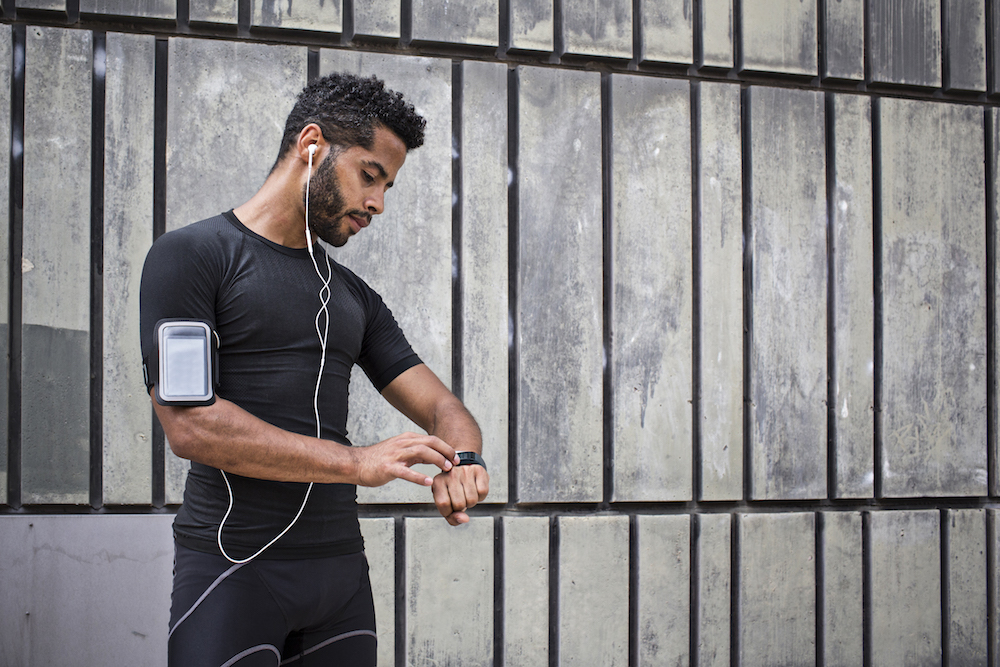Health and wellness in the digital age

The digital tools available to UPMC Health Plan members
Technology has changed the way we live. That extends to how we interact with wellness content [1]. The Pew Research Center reports that 81 percent of Americans own a smartphone. Many of them use their phone as their main internet-connected device [2]. We use apps to find a ride, find dates, pay bills, and read the news. It’s hard to find any part of our lives that isn’t connected.
We even use our phones to visit the doctor. But it doesn’t stop there. Here are some other ways tech is changing our health:
- Apps: Many people use apps to track wellness stats on their phones. Some apps are specific to one area of wellness, like fitness, meditation, or productivity. Others combine two or more of these. Some apps also have built-in features to help users reach goals. These features include reminders, challenges, and care managers.
- Wearables: According to the Pew Research Center, 1 in 5 Americans used a fitness tracker in 2020 [3]. These devices help people track things like activity, sleep, and heart rate. This data is sent to apps or health care providers. These devices can help you keep track of your progress over time.
- Remote patient monitoring: Remote monitoring connects doctors to patients’ medical devices. It lets doctors track patient health through blood pressure cuffs, scales, and more. The information is sent from the device to the doctor so they can review the patient’s progress. Research shows that this model is helpful to patients who want to improve their health [5].
- Telemedicine: Demand for remote care is rising. Telemedicine helps doctors meet that demand. It connects health care providers to patients in real time through video calls [3]. It’s a great way to get remote care, especially for those with limited access to providers [4][6].
- At-home tests: At-home test kits help people learn about their health. At-home kits can test for many things, like DNA and hormone levels. Some at-home kits require a prescription. Others are sold over the counter or online [7]. Results are delivered in the mail or through the company’s app or website.
Accessing digital health and wellness tools as a UPMC Health Plan member
UPMC Health Plan members have access to many of these health tools. They can help you manage your health and wellness.
Our offerings include:
The UPMC Health Plan mobile app: This app gives you access to health insurance information. You can use it to see member ID cards, medical claims, and plan details. You can also search for providers or chat with a Health Care Concierge.
The UPMC Health Plan member site: It has tools and information that can help you manage your health.
RxWell: UPMC Health Plan’s RxWell app can support your well-being. It combines proven techniques with support from care managers You can choose from seven programs based on your needs. Each program has self-guided activities to help you make healthy changes that last.
UPMC AnywhereCare: UPMC AnywhereCare helps you get the care you need when you need it. With AnywhereCare, you can have a visit with a provider without leaving your home.* UPMC AnywhereCare providers are available over live video 24/7. You can use your smartphone or computer to have an appointment.**
The UPMC MyHealth 24/7 Nurse Line: Our 24/7 nurse line is staffed by UPMC nurses. *** They can talk to you about your health concerns day or night.
Tech has changed how we live our lives. Instant access to information helps us connect with resources at the touch of a button. It’s time to put those tools to use to improve your health!
*UPMC Health Plan members located in Pennsylvania at the time of virtual visit may select a UPMC-employed provider or a provider from Online Care Network II P.C. (OCN), subject to availability and discretion of the provider. Members located outside of Pennsylvania will receive service from OCN. OCN is not an affiliate of UPMC. Limitations may apply for members of ASO plans that have opted out of coverage. During the COVID emergency, UPMC for You and UPMC Community HealthChoices members located outside of Pennsylvania will receive service from OCN. After the COVID emergency ends, UPMC AnywhereCare virtual visits are not covered services when UPMC for You and UPMC Community HealthChoices members are traveling outside of Pennsylvania.
**UPMC Health Plan provides free aids and services to help people communicate effectively with us. These may include language services for people whose primary language is not English and qualified sign language interpreters. Your provider will connect you to these services during the visit.
***UPMC nurses who answer calls are licensed to assist members in Pennsylvania, West Virginia, Maryland, New York, and Ohio. Members must be located in one of those states when calling the UPMC MyHealth 24/7 Nurse Line. The UPMC MyHealth 24/7 Nurse Line is not a substitute for medical care. If an emergency arises, call 911 or go to the nearest emergency department. Nurses cannot answer plan or benefit questions. Please call the Member Services phone number on the back of your member ID card for nonclinical inquiries.
References:
- Halamka J, Cerrato P. The Digital Reconstruction of Health Care. NEJM Catalyst. 2020;1(6). doi:10.1056/cat.20.0082
- Demographics of Mobile Device Ownership and Adoption in the United States. Pew Research Center. 2021. Accessed April 15, 2021. pewresearch.org/internet/fact-sheet/mobile/.
- Vogels EA. About one in five Americans use a smartwatch or fitness tracker. Pew Research Center. Aug. 14, 2020. Accessed April 15, 2021. pewresearch.org/fact-tank/2020/01/09/about-one-in-five-americans-use-a-smart-watch-or-fitness-tracker
- Kang J, Chen Y, Zhao Y, Zhang C. Effect of remote management on comprehensive management of diabetes mellitus during the COVID-19 epidemic [published online ahead of print, 2021 Jan 1]. Prim Care Diabetes. 2021;S1751-9918(20)30363-6. doi:10.1016/j.pcd.2020.12.004
- Lee SWH, Chan CKY, Chua SS, Chaiyakunapruk N. Comparative effectiveness of telemedicine strategies on type 2 diabetes management: A systematic review and network meta-analysis. Sci Rep. 2017;7(1):12680. Published 2017 Oct 4. doi:10.1038/s41598-017-12987-z
- Nittari G, Khuman R, Baldoni S, et al. Telemedicine Practice: Review of the Current Ethical and Legal Challenges. Telemed J E Health. 2020;26(12):1427-1437. doi:10.1089/tmj.2019.0158
- At-Home Testing. Centers for Disease Control and Prevention. Feb. 16, 2021. Accessed April 15, 2021. cdc.gov/coronavirus/2019-ncov/testing/at-home-testing.html



